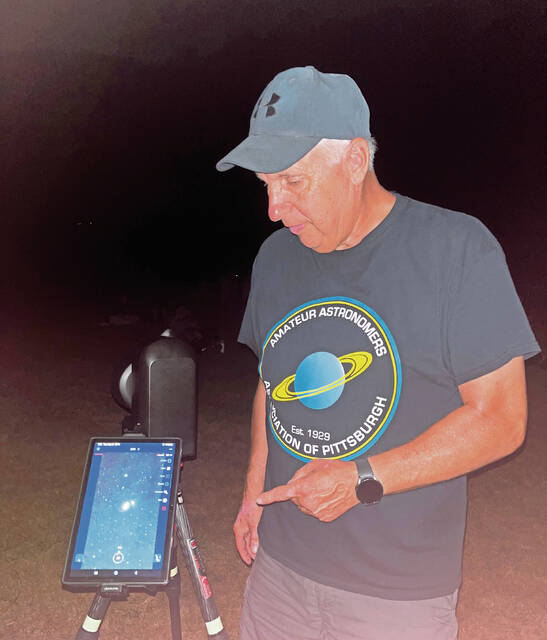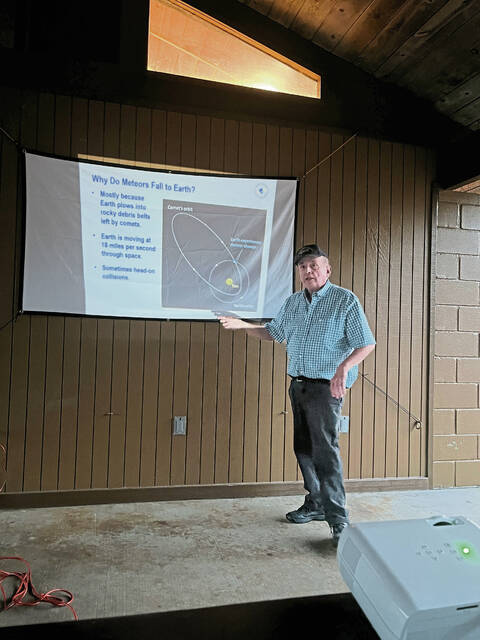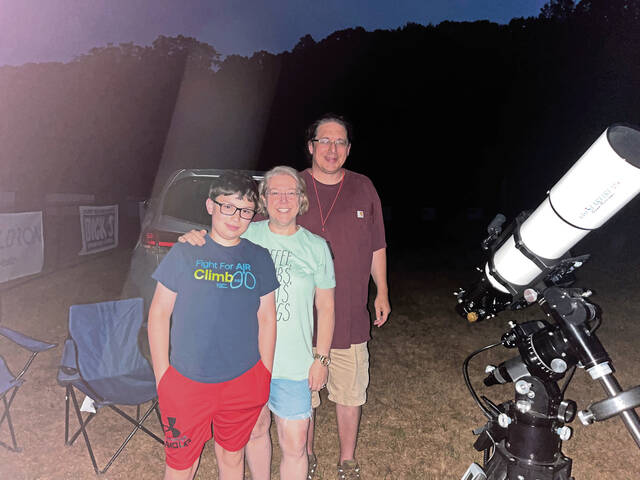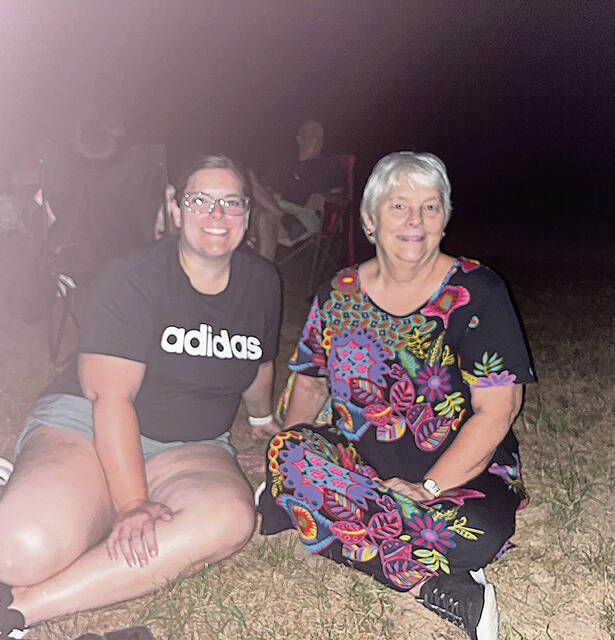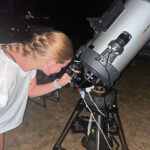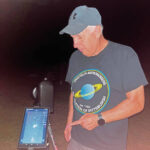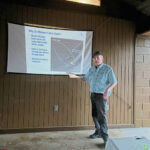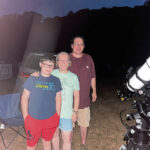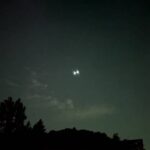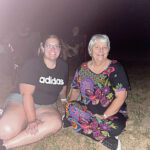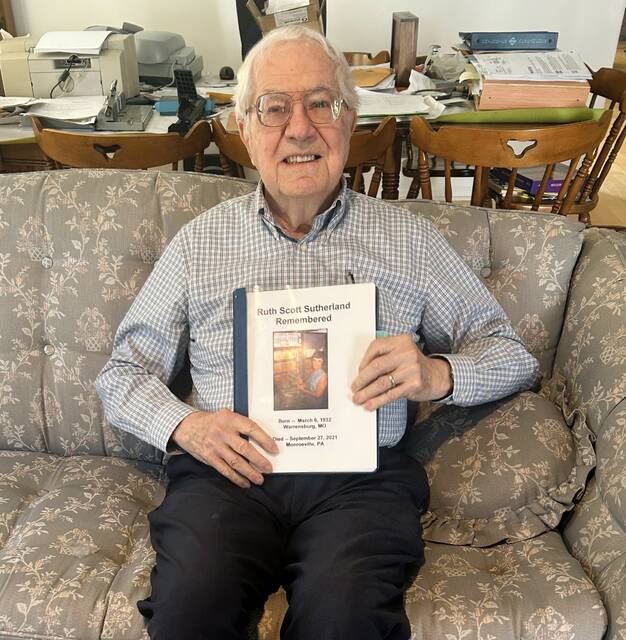“Oh! I just saw one!”
Stargazers sporadically interrupted their quiet chatter with excited cheering and clapping as they spotted the occasional meteor, also known as a shooting star, flashing briefly across the night sky during a recent star party.
Local families and members of the Amateur Astronomers Association of Pittsburgh gathered at Wall Park in McCandless from 8:30 to 10 p.m. Aug. 12 to witness the annual peak of the Perseid meteor shower.
Eric Fischer, a member of the Amateur Astronomers and director of its Wagman Observatory, gave a presentation explaining the science behind the meteor shower just before the stargazing began. Each year, he said, Earth crosses the path of the Comet Swift-Tuttle, “a periodic comet that’s leaving a cloud of debris around the solar system.”
“The debris is orbiting in an elliptical path. Sometimes we hit that debris head on. (When) the debris flow this way or go this way, we get very bright, fast meteors. Sometimes the meteors catch up to us and are slow. The Perseids tonight are going to be fast meteors,” Fischer said. “The reason it only happens once or twice a year is because that point of intersection is very narrow. There’ll be Perseid meteors for the next week. But each night, the numbers will start to drop.”
While answering audience questions after his presentation, Fischer said the meteor shower lasts for a couple of weeks, but that the night of the star party was the “prime night” to look for them as it was the night Earth was moving through the densest part of the comet’s debris.
Even so, seeing the meteors requires patience.
“Be patient. There’s going to be gaps. It’s not like a meteor every 30 seconds, you might have a two-minute break, and then you’ll suddenly have two meteors in 30 seconds,” Fischer said.
Sarah Kroll, a science teacher at Deer Lakes Middle School, brought along her mother, Tina Dunbar of McCandless, to spot some meteors.
“Since I teach in Deer Lakes, I have gone to the Wagman Observatory that’s in Deer Lakes Park where they have the star parties, and that was kind of what brought us to this one,” Kroll said. “This was our first time going for a meteor shower.”
During his presentation, Fischer explained how meteors originate from billions of years ago, when the solar system was a “demolition derby.”
“The planets were crashing into each other. Planets were crashing into moons. Moons were crashing into moons. Moons were crashing into asteroids, debris all around the sun, and the planets slowly formed out of that debris, but a lot of rocks and dirt were left over from all those collisions,” Fischer said. “The meteors actually come from the leftover debris. That debris, plus the second source, comets … the tails of comets have a lot of small particles that become meteors.”
Fischer said a typical meteor travels at speeds of 25,000 mph to 150,000 mph once it hits Earth’s atmosphere.
“Even at 25,000 mph, that crosses Allegheny County in two seconds. So when they hit the atmosphere, the friction is unbelievable, and they burn themselves from the outside in, and they dissipate, and they become dust, mostly,” Fischer said.
It’s because of this speed that Fischer described meteor observation as “usually a personal experience.”
“They happen so fast that if people are pointing in different directions and you see it, you cannot say, ‘Look at that meteor!’ It’s gone in a second,” he said.
Moving so quickly, meteors can be tricky to spot and even trickier to photograph — especially under a light-polluted sky and without the right equipment.
Several members of Amateur Astronomers, such as Hari Narasimhan of Pittsburgh, brought their smart telescopes — telescopes that use built-in cameras, long exposure times and tracking technology — which don’t capture meteors but can take high-quality images of slower subjects.
“It’s pretty smart, because it tells you what’s in the sky based on where you are,” Narasimhan said. “These are great for looking at clusters, nebulae, things like that.”
Rich Dollish, recording secretary of the Amateur Astronomers, used his smart telescope to capture multiple images during the star party, including an image of the Vulcan rocket launched earlier that evening by the United Launch Alliance.



